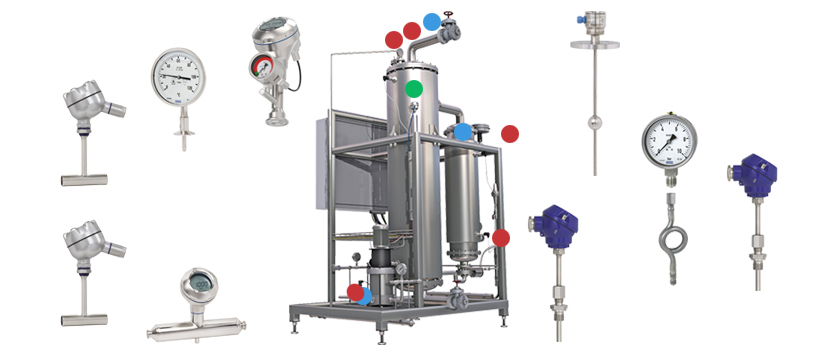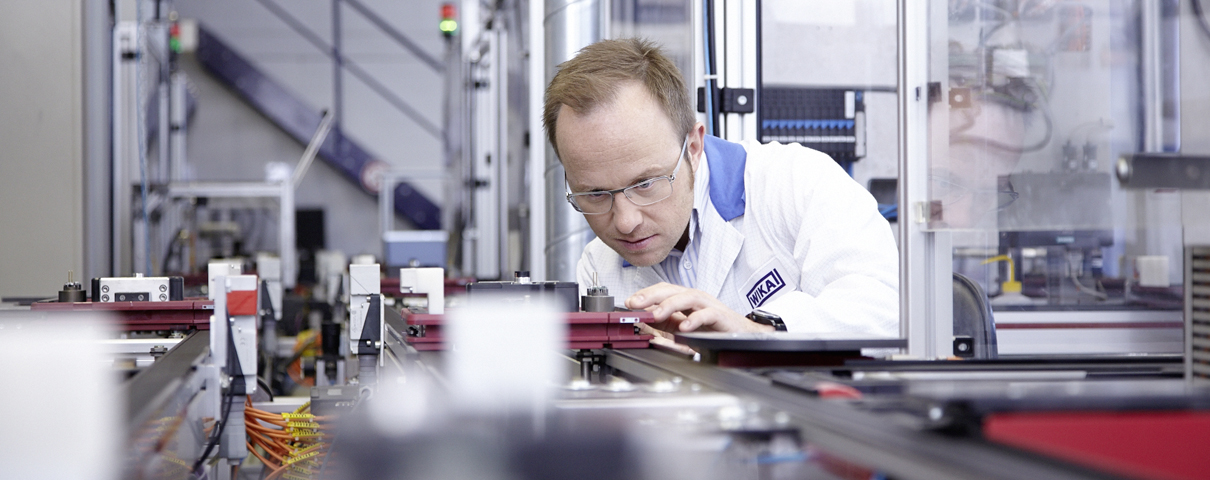
“Sterilisation in place” or “steam in place”, SIP for short, is an indispensable process in pharmaceutical production. It involves sterilising the relevant process equipment directly in the plant using condensing steam.
Following the cleaning in place (CIP) process, pipelines, instruments and other components used in pharmaceutical production must be sterilised regularly and reliably. Killing any microorganisms, such as germs, bacteria and viruses, ensures the desired product quality and, therefore, patient safety.
Sterilisation without dismounting
In the SIP process, the process equipment is sterilised directly in the closed system using steam, without any prior dismounting of the individual components. This minimises the risk of recontamination. At the same time, manufacturers must design their production facilities to be SIP-compatible, i.e. dead-space free, with smooth surfaces, crevice-free designs and without the risk of air pockets. The materials used must be able to withstand high temperatures. A guideline for this task is the internationally recognised ASME BPE (“Bioprocessing Equipment”) standard. WIKA measuring instruments for pharmaceutical applications fulfil these requirements.
Hot steam and atmospheric pressure
SIP is based on steam produced from ultrapure water by a generator. The steam temperatures are between 121 °C and 134 °C under saturated steam conditions at an overpressure of between 1 and 2 bar (15 and 30 psi). The sterilisation time at the coldest point is at least 20 minutes. However, pressure and temperature with SIP may vary depending on instrument design, product sensitivity and regional guidelines. The specifications are set by the relevant regulatory authorities and institutions, such as the Food and Drug Administration (FDA) in the USA and the European Medicines Agency (EMA) in Europe.
Automating and validating SIP processes
Most SIP processes are automated to ensure consistency and reliability. Appropriate instrumentation monitors the key parameters of temperature, pressure and sterilisation time. The SIP process also requires complete documentation of the procedures; Validation is essential here. It serves as proof that all sterilisation requirements have been met and that the underlying regulations have been complied with. Regular inspection and maintenance of the SIP systems is just as important as validation of the processes. This also includes the calibration of all measuring instruments.
Broad product portfolio for the monitoring tasks with SIP
The sterilisation process places high demands on the instrumentation used to monitor and control it. For this purpose, WIKA offers a broad portfolio of measuring instruments. This applies to both the monitoring of steam generation and the equipment that is suitable for the SIP process.

Instrumentation of a steam generator for the measurands pressure (blue), temperature (red) and level (green). The following WIKA measuring instruments were selected for this example (clockwise from bottom left): model DMSU22SA in-line process transmitter, model TR22-B resistance thermometer (2x), model TG58SA bimetal thermometer, model DMSU21SA pressure transmitter with diaphragm monitoring system, model FLR-H reed level transmitter, model 232.50 bourdon tube pressure gauge (with model 910.15 D syphon) and model TR10-D threaded resistance thermometer (2x).
Note
An overview of measuring instruments for SIP and other applications in the pharmaceutical industry can be found on the WIKA website. If you have any questions, your contact will gladly help you.
Also read our posts
Pressure monitoring in the pharmaceutical industry with a universal instrument
Pressure gauges for pharmaceutical processes: Flush-mounted “dry measurement”
Injectables: Pressure measurement without risk of contamination
Diaphragm seal systems with TRI-CLAMP® connection are NovAseptic® compatible

